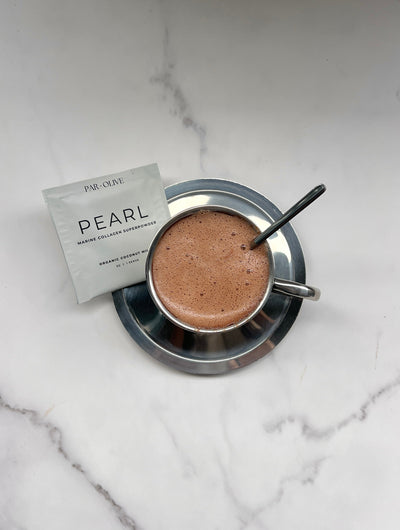The Four Pillars of Facial Skin Health: A Dermatologist’s Guide

As a board-certified Dermatologist specialised in facial-inflammatory skin diseases and aesthetic dermatology, the cornerstone of any effective treatment plan begins with a comprehensive assessment of a patient’s skin. At LVATE, based in Munich, Germany, we utilize both clinical tools and advanced skin analysis devices to determine which of the four fundamental pillars of facial skin health requires the most attention: inflammation/sensitivity/redness, pigmentation, acne-prone skin, or skin texture.
This personalised approach isn't just a practice at our clinic; it's a philosophy that should guide anyone navigating the often-overwhelming world of aesthetic dermatology. By identifying the primary concern for each individual, we can focus on targeted treatments and active ingredients that deliver the best possible outcomes. Below, we’ll dive into each of these pillars, their underlying causes, and how they can be effectively addressed through both skincare and medical interventions.
Inflammation, Sensitivity, and Redness
Sensitive skin is highly susceptible to reactions from underlying conditions like rosacea, environmental triggers, and harsh skincare products, making it more prone to discomfort and inflammation. Additionally, many of the latest "trending" aesthetic procedures, such as CO2 lasers, can be too intense for sensitive skin. While such treatments can be beneficial for patients with severe acne-induced scarring, for those with sensitive skin, it’s crucial to prioritise minimally invasive approaches that focus on rebuilding the skin's barrier first.
When it comes to strengthening the skin’s barrier, focus on a basic skin care routine. This includes using a gentle cleanser, a face cream with a balanced lipid profile (ideally containing natural moisturising factors, ceramides, and panthenol), and daily sun protection (SPF). Gentle actives like Niacinamide can help reduce inflammation and strengthen the skin’s defense mechanisms. Hyaluronic acid is another excellent choice, providing deep hydration and maintaining skin integrity, which is especially beneficial for sensitive skin. Additionally, peptides support the skin's barrier function and can significantly aid in its repair and regeneration.
Gentle medical treatments that prioritize skin repair can include PRP, platelet-rich plasma (PRP), which can be incorporated in a facial treatment or carefully injected superficially. It may
help to regenerate the skin, strengthen the barrier, and promote healing. At our clinic, we usually add laser treatments for facial redness. A Yellow Laser for example, specifically targets blood vessels providing noticeable results with minimal to no downtime. Reducing redness not only calms inflammation but also alleviates sensitivities like burning sensations, promoting overall skin comfort and health
Pigmentation
Pigmentation concerns such as sunspots, melasma, and freckles are caused by the overproduction of melanin in the skin. These issues can arise due to sun exposure, hormonal changes, or as a result of previous inflammatory skin conditions or trauma. Addressing excess pigmentation is a multifaceted challenge that requires a comprehensive approach: preventing the formation of new melanin, gently correcting existing pigmentation, and supporting skin regeneration.
Prevention is the foundation of managing pigmentation. Broad-spectrum sun protection (SPF) and textile sun protection, such as wearing hats and caps, are essential to prevent further melanin production from sun exposure. Alongside this, carefully selected active ingredients should be incorporated into patients’ skincare routines to target pigmentation. Vitamin C, Vitamin A, and Tranexamic acid are all effective options. It’s crucial, however, to ensure that these ingredients are used at appropriate concentrations to avoid irritation, as excessive strength could potentially exacerbate pigmentation issues. I personally reserve hydroquinone for rare cases, as it can sometimes lead to uneven results, with some skin types either lightening too much, darkening, or showing no change at all.
For addressing existing pigmentation, we turn to advanced treatments, such as laser therapy, which targets melanin directly and breaks it down into smaller particles that the body can then more easily eliminate via the lymphatic system. Laser treatments are highly effective, as they specifically target pigment without damaging surrounding tissue. Microneedling combined with PRP (Platelet-Rich Plasma) is another option to improve pigmentation by promoting skin regeneration and enhancing cell turnover. For more superficial pigmentation, light chemical peels can also be beneficial, as they exfoliate the skin, encouraging the fading of dark spots.
However, as with all treatments, it is important to maintain a gentle approach. Overly aggressive treatments can irritate the skin and potentially lead to the development of new pigmentation, which is why maintaining the skin’s barrier function is key to preventing both existing and future pigmentation concerns (as previously discussed in the abstract).
Acne-Prone Skin
Acne is one of the most prevalent skin concerns, affecting individuals worldwide across all age groups. It arises from a combination of genetic predisposition, excessive sebum production, clogged pores, dead skin cells, and bacterial growth, which leads to inflammation. Acne severity can vary, ranging from occasional breakouts to persistent, more severe cystic acne.
At LVATE, our approach to acne treatment is holistic and individualised. The first step involves a thorough understanding of the patient’s daily lifestyle, including skincare routines, diet, stress levels, and sleep quality. With growing scientific evidence supporting the impact of lifestyle factors on acne development and persistence, educating patients about how their habits influence their skin health can often result in significant improvements.
Next, we assess the type of acne present, focusing on whether comedones (blackheads/whiteheads) or inflammation is the primary concern. For patients with comedones, which are characterised by clogged pores without inflammation, topical treatments that regulate sebum production are essential. Vitamin A derivatives, particularly those that specifically target the sebaceous glands, are often preferred over products like "retinol," which promote overall skin turnover. Comedone extraction treatments are reserved for open comedones (blackheads), ensuring that extractions are performed safely and effectively.
When inflammation is the dominant feature of acne, we turn to anti-inflammatory agents like salicylic acid and benzoyl peroxide (BPO). Salicylic acid, a beta-hydroxy acid (BHA), deeply penetrates the pores, exfoliating and preventing blockages, while BPO targets the acne causing bacteria and reduces inflammation. While BPO can be combined with topical antibiotics, I typically opt for low-dose systemic antibiotics if needed to reduce the risk of resistance and avoid the use of topical antibiotics, which can disrupt the skin’s natural microbiome. For cystic acne, systemic Vitamin A (in the form of oral isotretinoin) is often recommended to reduce inflammation, prevent scarring, and promote healing. Sometimes it’s also important to incorporate other specialists, such as gynecologists or endocrinologists, when underlying hormonal imbalances or other medical issues may be contributing to acne.
Only once inflammation has been resolved and the skin is stable without prescription medications, I focus on clinical treatments for scarring. (Radiofrequency)-microneedling is highly effective for treating mild post-acne scars by stimulating collagen production and improving skin texture. For more severe scarring, CO2 laser treatments are my preferred method. Scar treatments require patience, as improvement can take several months or even years, and it’s important to approach this process with full transparency. Even more critical to address acne early and effectively to prevent long-term consequences.
Skin Texture, Fine Lines, and Wrinkles
As we age, our facial anatomy changes and the skin loses its natural elasticity and collagen, leading to the appearance of fine lines, wrinkles, sagging and rough texture. This is further exacerbated by sun exposure, daily lifestyle choices, and environmental stressors. Addressing these factors requires a comprehensive approach, starting with lifestyle modifications. A focus on diet, alcohol consumption, and smoking is crucial, as no aesthetic or dermatologic treatment can fully reverse the damage these harmful habits inflict on skin health.
Just like (re)building a house from the group up, the next step is to improve the “foundation” of the skin through collagen-stimulating medical procedures. These treatments can include injectable agents like Poly-L-lactic acid (PLLA), which act by stimulating fibroblast activity, leading to enhanced collagen production over time. PLLA, along with other biostimulatory substances such as calcium hydroxylapatite and hyaluronic acid-based skin boosters can help to naturally restore volume, especially in the mid-face. Once the foundation is stabilised, we focus on enhancing the “roof” of the skin by incorporating treatments like microneedling and laser therapies. These modalities create controlled micro-injuries in the dermis, stimulating collagen production while resurfacing the skin. This results in a smoother, more youthful appearance, with improvements in skin texture and tone.
In terms of daily skincare, the previously mentioned strategies to strengthen the skin’s barrier should remain a priority, with additional active ingredients such as Vitamin A for promoting skin cell turnover and stimulate collagen production. Hyaluronic acid helps to plump and hydrate the skin, temporarily filling in fine lines. While the antioxidant Vitamin C can protect the skin from further aging caused by oxidative stress.
Words by Dr Anne Gürtler.





